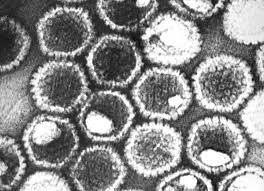Significance
Upon viral infection, cells produce and secrete proteins called interferons (IFNs) that bind to receptors on infected or neighboring cells to induce the expression of genes whose products act to interfere with viral replication. The mechanisms of action of certain of the IFN-induced proteins functioning in the cytoplasm have been defined, but little is known about the mechanisms of restriction of IFN-inducible proteins that act within the nucleus. In this study, we showed that a cellular nuclear protein, when induced by IFN, can reduce wild-type herpes simplex virus infection through effects on viral chromatin. This study defines the impact of this nuclear IFN-stimulated gene and provides opportunities for future antiviral strategies relating to epigenetic silencing within the nucleus.
Abstract
Interferons (IFN) are expressed in and secreted from cells in response to virus infection, and they induce the expression of a variety of genes called interferon-stimulated genes (ISGs) in infected and surrounding cells to block viral infection and limit spread. The mechanisms of action of a number of cytoplasmic ISGs have been well defined, but little is known about the mechanism of action of nuclear ISGs. Constitutive levels of nuclear interferon-inducible protein 16 (IFI16) serve to induce innate signaling and epigenetic silencing of herpes simplex virus (HSV), but only when the HSV infected cell protein 0 (ICP0) E3 ligase, which promotes IFI16 degradation, is inactivated. In this study, we found that following IFN induction, the pool of IFI16 within the infected cell remains high and can restrict wild-type viral gene expression and replication due to both the induced levels of IFI16 and the IFI16-mediated repression of ICP0 levels. Restriction of viral gene expression is achieved by IFI16 promoting the maintenance of heterochromatin on the viral genome, which silences it epigenetically. These results indicate that a nuclear ISG can restrict gene expression and replication of a nuclear DNA virus by maintaining or preventing the removal of repressive heterochromatin associated with the viral genome.







